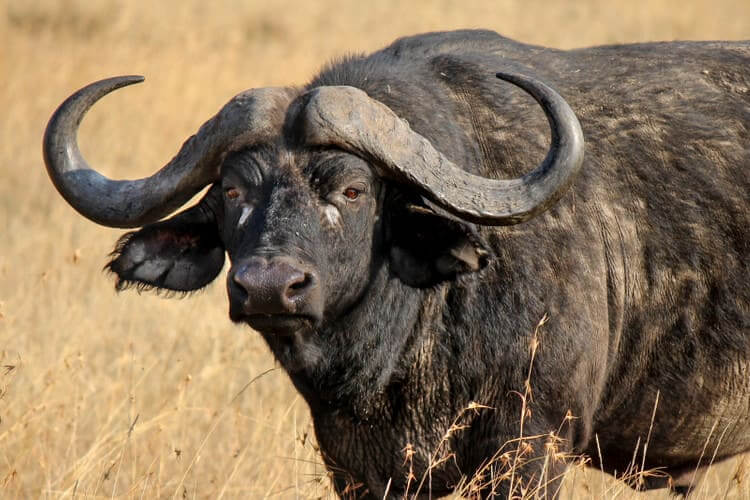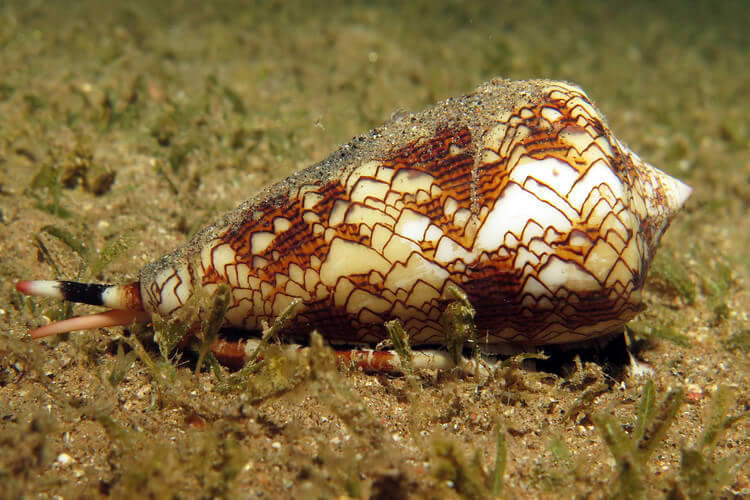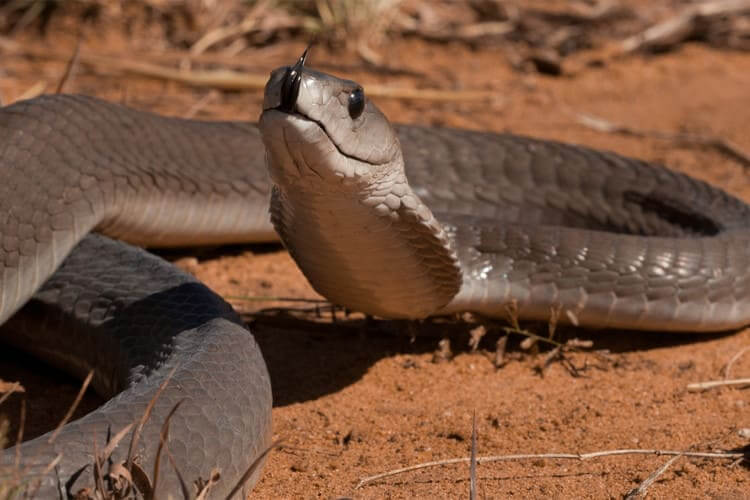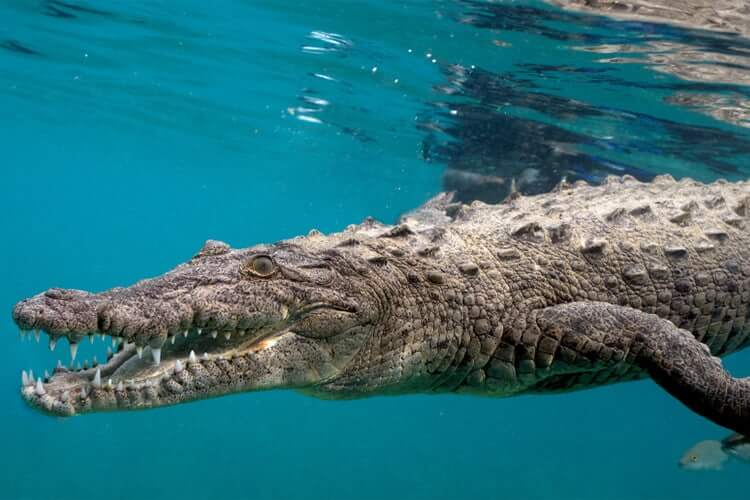
The 10 Most Dangerous Animals And Where They Like To Lurk
One of the most significant threats to human beings is the presence of animals that coexist with us on this planet. These individuals roam the planet, and, although they may seem inconspicuous, they are actually accountable for numerous fatalities and injuries inflicted upon humans by wildlife. It is crucial to acknowledge a significant number of them, as there are plenty that may not appear highly lethal at first glance. Be attentive as you peruse and uncover the ten most perilous creatures on Earth.
#10 Cape Buffalo

Sub-Saharan Africa is home to these animals, which, when left undisturbed, exhibit docile behavior. Several individuals on safaris in Africa encounter these creatures and become enthralled by their majesty, which presents a challenge. With a height of 6 feet and a weight exceeding a ton, these creatures typically move in groups, particularly during the late afternoon and early morning, when they start feeding on grass. However, it is important to note that when they perceive a threat, they will engage in aggressive behavior, frequently in a coordinated manner, by encircling and attacking their target at a speed of 35 miles per hour. Their reputation as the deadliest animal on safaris is well-deserved, as they have caused more fatalities than any other creature, leading to their nickname, Black Death.
#9 Cone Snail

While on your upcoming tropical holiday, be vigilant for these minuscule organisms. Despite their aesthetically pleasing brown and white marbled shells, we strongly advise against attempting to handle one of these creatures. Under their charming exteriors lie secret teeth resembling harpoons, which house a potent poison called conotoxin. Because of its complexity, there is currently no existing antivenom. In the event of a bite, it is imperative to promptly seek medical attention at the emergency room. The poison inhibits signal transmission between nerve cells, earning the snail the moniker “cigarette snail.” This suggests that you will only have enough time to smoke a cigarette before your death.
#8 Golden Poison Dart Frog

These poisonous frogs, known as batrachotoxin, live in a small rainforest area near Colombia’s Pacific coast. This substance’s toxicity is so high that a single frog possesses a lethal dose capable of killing 10 adult males. Furthermore, an adult human can die from a mere two milligrams, the same volume as the tip of a pin. The glands are located directly beneath the frog’s skin, so even a little touch can result in a visit to the emergency department.
#7 Box Jellyfish

Box jellyfish typically inhabit the boundary between the Indian and Pacific oceans. People often regard box jellyfish as the most lethal marine creature on the planet, despite their lack of intelligence and limited top speed of 5 miles per hour. Their tentacles, which may reach a length of 10 feet, possess numerous stinging cells that simultaneously target the heart, neurological system, and skin cells with their venom. Fortunately, there exists an antivenom, albeit there are hundreds of them.
#6 Pufferfish

Pufferfish, found in tropical oceans in East Asia such as Japan, China, and the Philippines, are very toxic creatures. Their toxin, known as tetrodotoxin, is thought to be approximately 1,200 times more lethal than cyanide. The highly hazardous toxin is present in the fish’s skin, muscular tissue, liver, and gonads. NeverIn Japan, puffers are considered a gourmet food and only skilled and authorized chefs can handle them. te extensive training and preparation, a significant number of individuals die annually simply from consuming pufferfish.
#5 Black Mamba

The Black Mamba, found in the savannas of south and east Africa, is not the most venomous snake. However, the speed and aggressiveness of the matter overshadow all other considerations. The snake, capable of moving at velocities of up to 12.5 miles per hour, will pursue its prey when it senses danger, rendering evading one of these animals on foot exceedingly difficult. A single bite contains a lethal amount of toxins capable of killing 10 individuals, and the snake will automatically deliver multiple bites before moving away. Subsequently, there is a time window of 20 minutes within which the administration of the antivenin is crucial to prevent fatality.
#4 Saltwater Crocodile

Saltwater crocodiles are formidable and hostile creatures, surpassing sharks in their responsibility for a greater number of human fatalities annually. Often found in the Indo-Pacific waters, these creatures occasionally migrate as far south as Australia. Their bite strength is comparable to that of the T. Rex. Although commonly referred to as “saltwater” crocodiles, these species possess the ability to swim in freshwater as well, rendering them swift, formidable, and exceedingly perilous.
#3 Tsetse Fly

The tsetse fly, considered the world’s most perilous fly, resembles a typical housefly in size. Located in Sub-Saharan Africa, this fly, despite its small size, is widely regarded as the most hazardous species on the planet. Similar to mosquitoes, they extract human blood, transmitting diseases like the parasite Trypanosomes. The parasite is the primary cause of African Sleeping Sickness, a disorder that impacts the neurological system and disrupts sleep habits. There are currently no vaccines or therapies for this condition, and it has the potential to cause death. Precautions entail donning attire in neutral hues and avoiding proximity to shrubbery during daylight hours.
#2 Mosquito

The mosquito, found globally, is among the tiniest creatures and ranks as the second most lethal on our roster. Similar to the Tsetse Fly, these bothersome insects transmit a variety of lethal illnesses, including Chikungunya, encephalitis, elephantiasis, yellow fever, dengue fever, the West Nile virus, and the Zika virus. These diseases collectively cause the deaths of around 725,000 individuals per year and impact nearly 700 million people. Approximately half of the global population is susceptible to contracting a mosquito-borne disease, as stated by the World Health Organization.
#1 Humans

The human species holds the top spot. Despite the perilous nature of the animals mentioned, humans themselves pose the greatest threat. Throughout history, warfare has resulted in the deaths of a staggering number of individuals, ranging from 150 million to 1 billion. Despite the fact that we currently reside in an era characterized by relative calm, the occurrence of arbitrary acts of violence and attack continues to prematurely terminate numerous lives in a terrible manner. Additionally, our ability to engage in nuclear warfare grants humans the power to annihilate all species on Earth. Consequently, animals fear us more than we fear them.




